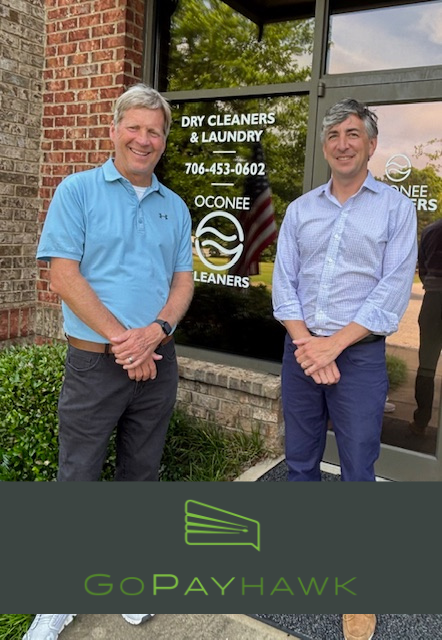Olive Oil considered liquid gold in ancient times
Published 8:00 am Wednesday, December 29, 2010
Oh, That Precious “Liquid Gold!”
Homer described it as “liquid gold.” But what should we know about olive oil before purchasing it for consumption? There is a plethora of information that is confusing to decipher and differs from country to country — so buyer beware.
The olive tree is native to the Mediterranean basin — if fact, wild olives were collected by Neolithic peoples as early as the 8th millennium BC. (The Neolithic Age was a period in the development of human technology, beginning about 9500 BC in the Middle East.) It is believed the wild olive tree originated in Asia Minor, now modern day Turkey. There is archeological evidence that the first cultivation of olive trees took place in Crete as long ago as 2500 BC. There also exists archeological evidence of olives being turned into olive oil in submerged settlements off the Carmel Coast, Israel around 4500 B.C.
Olive oil has played an important role in biblical text. In the Book of Genesis, remember the dove who was sent out by Noah only to return with an olive branch in her beak — evidence that the divine wrath of the Flood had abated.
There are more than 750 million olive trees cultivated worldwide, 95 percent of which are in the Mediterranean region, with Spain being the top producer of olive oil in the world. Of European production, more than 90 percent comes from Croatia, Greece, Italy, Portugal and Spain. Greece devotes 60 percent of its cultivated land to the growing of olive trees. It is the world’s top producer of black olives and has more varieties of olives than any other country.
There are two different regulatory systems that determine how olive oil is classified. Officially governing 95 percent of international production is the International Olive Oil Council (IOOC). The IOOC is located in Madrid, Spain; more than 85 percent of the world’s olives are grown in IOOC member nations. The United States is not a member of the IOOC, and the U.S. Department of Agriculture (USDA) does not legally recognize its classification system.
Olive oil is classified by how it was produced (method of extraction), by its chemistry (the percentage of free oleic acid which indicates the extent to which fat molecules have been degraded into their fatty acid components), and by its flavor. The IOOC terminology is precise, but it can be misleading between words that describe production and words used on retail labels. U.S. Customs regulations on “country of origin” suggest that if a non-origin nation is shown on the label, the real origin must be shown somewhere else on the bottle’s label — same size letters so as not to mislead consumers. We investigated olive oil in supermarkets, boutique markets and farmers’ markets. What we found was often deceptive olive oil labeling. On the front of the label “imported from Italy,” on the back in smaller print the other nation/nations origins.
The grading system used to classify oil extracted from the olive fruit (production) is:
— Virgin — oil produced by the use of physical means with no chemical treatment. The term virgin oil referring to production is different from Virgin Oil on a retail label (more later).
— Refined — oil that has been chemically treated to neutralize defects.
— Pumace — remaining paste.
In countries that adhere to the standards of the IOOC, the retail labels in stores show an oil’s grade. They are:
— Extra-virgin olive oil — virgin oil only with no more than 0.8 percent acidity. Extra-virgin olive oil accounts for less than 10 percent of all olive oil production.
— Virgin olive oil — virgin oil only with less than 2 percent acidity.
— Pure olive oil or olive oil — blended virgin and refined oil with no more than 1.5 percent acidity.
USDA grading system:
— U.S. Grade A or Fancy — oil with not more than 1.4 percent acidity and “free from defects.”
— U.S. Grade B or Choice — oil with not more than 2.5 percent acidity and “reasonably free from defects.”
— U.S. Grade C or Standard — oil with not more than 3.0 percent acidity and “fairly free from defects.”
— U.S. Grade D or Substandard — oil with more than 3.0 percent and “fails to meet the requirements of U.S. Grade C.”
These grades are entirely voluntary and since the IOOC retail grades have no legal meaning in this country, terms such as “extra-virgin” may be used without legal restrictions.
Other wording you may find on olive oil labels:
— Cold pressed — an anachronistic and largely unregulated label description, it simply means that the oil was not heated over a certain temperature during processing (usually 80 degrees Fahrenheit).
— First cold pressed — means that the fruit was crushed exactly one time. Cold refers to the temperature range of the fruit at the time it is crushed. It is important that pressing temperatures be as low as possible, yet there is no international reliable definition of “cold pressed” or a requirement for labeling. Interestingly, there is no “second press” of olive oil, so the term “first press” only means that the oil was produced in a press vs. other possible methods!
— Unfiltered — a cloudy oil that contains tiny particles of olive flesh with a shelf life on only a few months. These bottles must be dated by law.
— Fino olive oil — a blend of extra virgin and virgin oils.
— Organic olive oil — an oil produced without pesticides.
— Light olive oil — an American marketing term, the oil is processed using an extremely fine filtration system. This gives the oil a higher smoke point and, therefore, can be used for high-heat frying. It contains the same number of calories and beneficial monosaturated fat as regular olive oil.
We have even read about 100 percent Extra Virgin Olive Oil or Extra Virgin Olive Oil — 100 percent Olive Juice. This is extremely rare and very hard to find. Try looking in any market and chances are you will not find an olive oil like this. Why? Because almost all olive oils available are mixtures of some kind. It is allowable by law to print on a label “Extra Virgin Olive Oil”, but not “100 percent Extra Virgin Olive Oil,” because that would be a lie.
Olive oil should be stored in a cool, dark place for up to 6 months or refrigerated up to a year. Chilled olive oil will become cloudy, but become liquid again when brought to room temperature and the taste will not suffer.
Recently we had a blind olive oil tasting at Cindy Lutini’s. We even located an Unfiltered, First Cold Pressed Extra-Virgin Olive Oil! We cleansed the palate with simple crusty plain white bread and sampled a 2008 Bastianich Vespa Bianco, and a NV Flor Prosecco, both recommended by one of our wine distributing
experts.
I’m hoping one of my holiday gifts this year includes an Organic, Unfiltered (and dated), First Cold Pressed, 100 percent Extra-Virgin Olive Oil — maybe processed using olives that have been hand-picked and signed in Greece! That should break the bank.
— Cindy Shultz is the owner and chef at Cindy Lutini’s Pasta for Life. She holds a B.A. from the University of North Carolina at Chapel Hill and an M.A. from John Carroll University.




